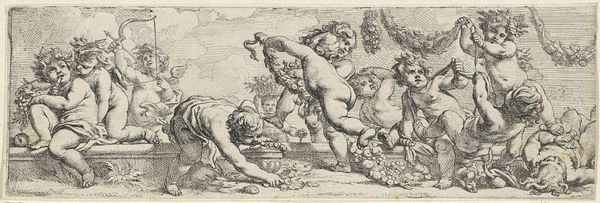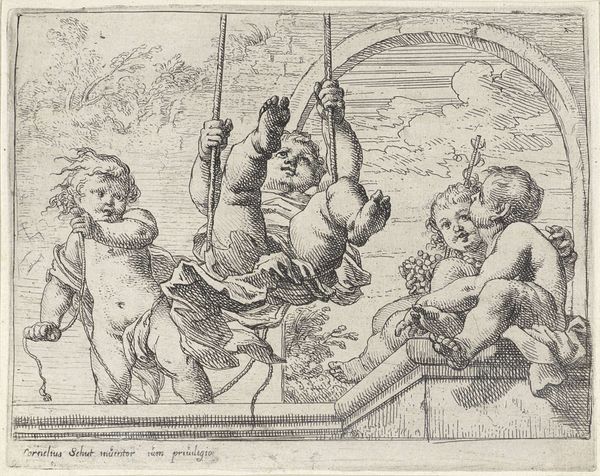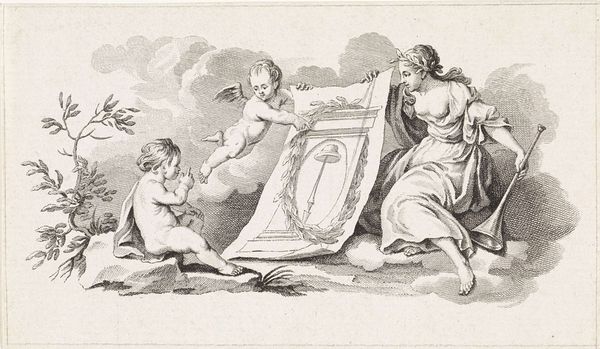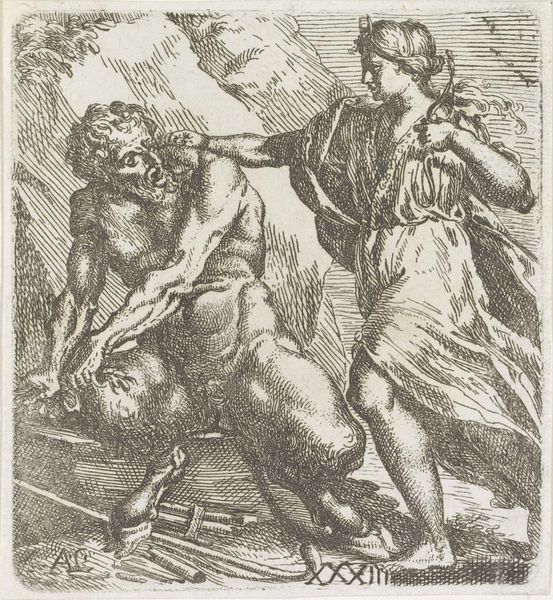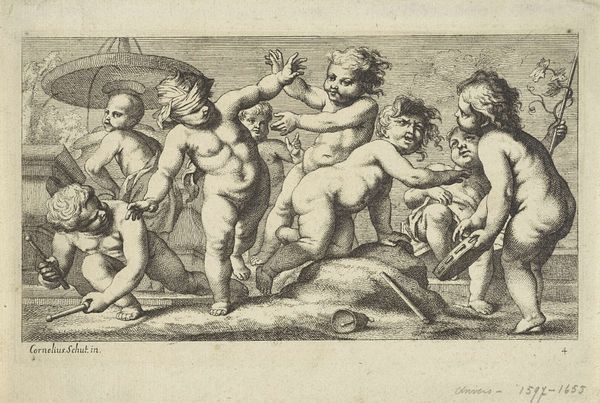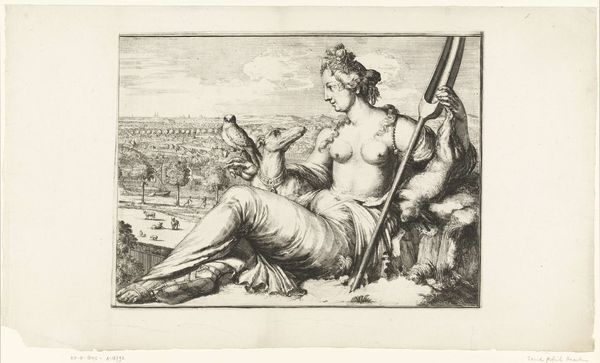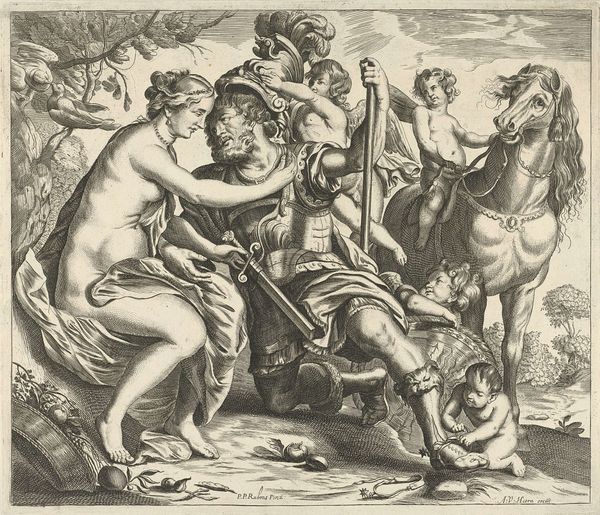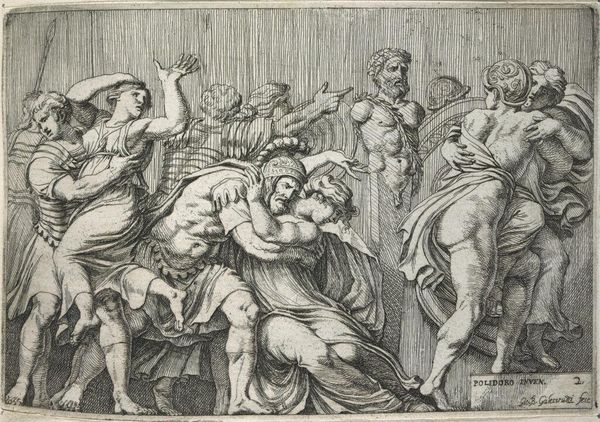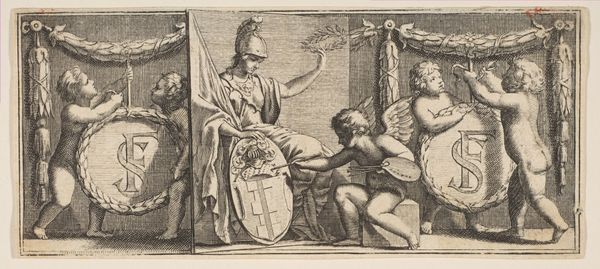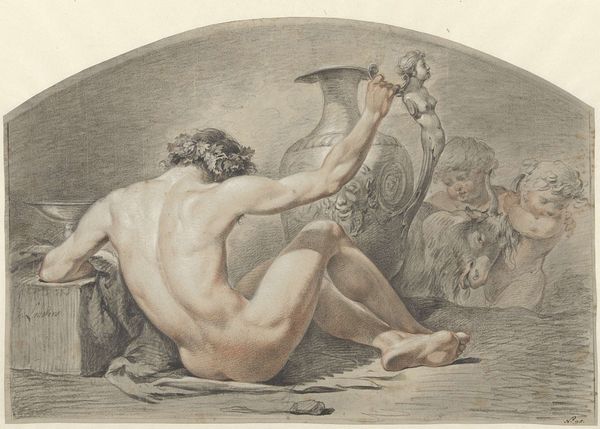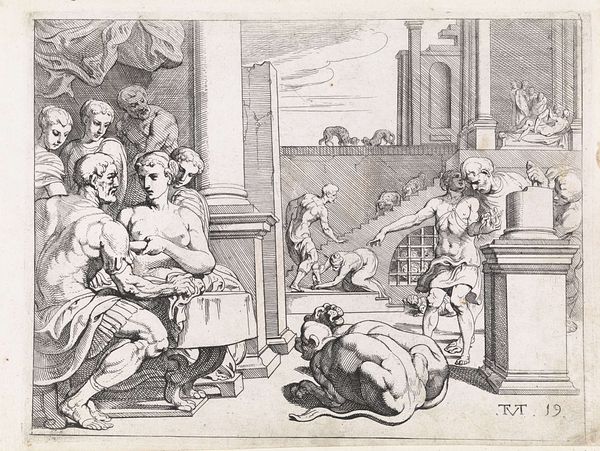
etching, engraving
#
allegory
#
baroque
#
etching
#
old engraving style
#
figuration
#
genre-painting
#
history-painting
#
nude
#
engraving
Dimensions: height 104 mm, width 130 mm
Copyright: Rijks Museum: Open Domain
Curator: Right now, we are standing in front of "Vlijt overmeestert Luiheid", which translates to "Diligence Overcomes Laziness." Arnold Houbraken created this engraving sometime in the 1710s. It's a striking piece from the Rijksmuseum collection. What catches your eye first? Editor: Immediately, the tension! The dynamism between the two figures – one lounging, the other actively… attacking? There's a charged energy that belies its small size and simple medium. Curator: Precisely! The Baroque period was fond of allegorical representations, and here, Houbraken uses two cherubic figures to embody the concepts of diligence and laziness. Consider the symbols employed: the industrious child stands next to what appears to be a rooster, a common symbol of wakefulness and action, and wields a whip as he seems to be trying to push off laziness. Editor: And laziness reclines with draped clothing, looking almost nonchalant, with its limbs akimbo! One can’t help but think about the contemporary connotations – or at least assumptions – surrounding work ethic that likely fueled the piece’s reception. Did the art world expect that a firm "talking to," so to speak, might serve as commentary to, shall we say, those experiencing chronic unemployment in early 18th-century Netherlands? Curator: Indeed. It's easy to project modern socio-political concerns onto it. But considering the cultural landscape, such allegories were widespread didactic tools. Houbraken wasn't merely creating art for art's sake; his art served as moral instruction. Think of emblems, popular at the time, where images combine with mottoes and verses to drive home ethical lessons. This is operating in that symbolic sphere, even as art for the sake of interior design becomes popular. Editor: The historical context definitely deepens the engraving’s meaning beyond its visual narrative. Even something like the surface—this specific, coarse hatching and stark contrast—might carry deeper symbolic weight. The lines themselves feel like they represent activity; even looking closely feels exhausting, as though idleness itself has been banned. Curator: I think that’s well observed; even Houbraken’s style seems to echo the message. It speaks to how interwoven aesthetics, moral codes, and cultural anxieties become when channeled through visual language. Editor: Looking at "Vlijt overmeestert Luiheid" now, it feels far more complex than just a simple depiction of virtue defeating vice. There are social messages and assumptions about class and personal responsibility wrapped into this tiny image, and perhaps that can be found in almost every art work in the Rijksmuseum. Curator: Agreed, this Baroque engraving really encapsulates how art from the era served multiple purposes: aesthetic enjoyment and cultural conditioning.
Comments
No comments
Be the first to comment and join the conversation on the ultimate creative platform.
